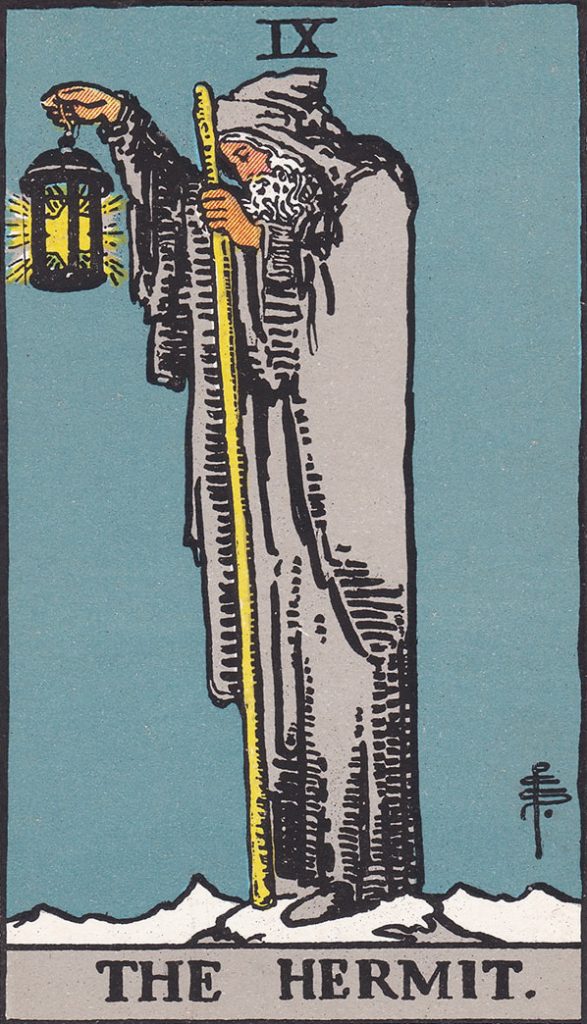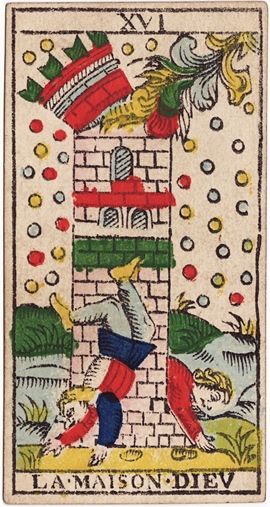I found myself thinking a rather odd thought the other day. I was in conversation with some people about Tarot, and realized, quite to my surprise, that I almost proclaimed: “But I’ve been doing this since before you were born!”
See, I have been working with Tarot since I was seven years old. That means that this year, I have a half century of experience with cartomancy and the use of Tarot symbology.
Fifty. Years.
And it occurred to me that my companions were neither over 50 years old.
That’s a jarring realization.
Don’t get me wrong. I have great respect and have learned a tremendous amount from the people in question, and I am glad to have been taken into their company. But the thought put me down a rabbit hole, regarding my own experience and practice of the mantic arts.
Obviously at seven I was not a master Tarot reader. I had a book that had introduced me to many concepts regarding magic and the occult, and I had the thin book that came with my cards, now lost. But, for everything there is a first time, and for me it was back in the early 70s.
So by the time I reached my teens, I had memorized the standard meanings for the cards, the reversed meanings, and the general layouts, and could do a reading without having to refer to the book.
I had intuited that “reading” meant assessing the entire context of the layout, perhaps not exactly in line with the book interpretations, or even with respect to the traditional significance of a card’s placement. That didn’t come from the books I had, but anyone who has been reading a while will tell you that comes with practice.

I was on my way to a more personal, and more powerful, relationship with the cards before I was able to drive a car. And that’s likely before any of my friends ever even picked up a deck.
I did stop myself from blurting out “I’ve been doing this since before you were born!”
We all hate hearing that kind of answer. It smacks of arrogance, judgment, and perhaps a little condemnation. It’s right there with “You kids get off my lawn”, and effectively ends any substantive conversation. It presumes an authority that may not exist, purely derived from the passage of time.
All of us have different experiences, and just being older or doing something longer doesn’t automatically connote superior knowledge. But yet we all have either had the urge to proclaim our superior position in the timeline, or we will have that urge.
I stopped reading the cards for people in the mid 2000s for a number of reasons, but I still collect and work with Tarot (and some oracle decks). I use them both as personal divinatory aids and for meditative journeys based on the imagery. And their symbology has influences into my art and craft and magical workings.
However, not being an active reader working with clients means I may be missing out on some insights that happen in that environment. Most experienced readers will tell you that there’s an intuitive, possibly even psychic, process to interpretation, and that certainly is impacted by the presence of the person for whom you are reading. So there is every chance that I can learn something new from my friends who have an active public practice, even if they haven’t been at it as long.

On the other hand, there are potentially things that I have come across because I explore the cards in context of other magical practice, so their elemental, astrological, kabbalistic, and numerological aspects come to the fore. Certainly these can and do have a bearing on reading for other people, although perhaps not as prominently.
It’s not likely to be found in the “little white book” that comes with the deck, at least not in depth. There are so many layers and correspondences that it can take years to find them, and I don’t claim to have found even most of them.
Every time I get a new deck, I rethink and reinvent what I know about Tarot. I collect decks that “speak” to me. That would be the case with most of us who collect them.
There’s a very personal relationship between the Taroist and their cards. In my case the connection is the art. As an artist myself, that is the first touchstone.
Knowing so very well the “standard” Rider-Waite-Smith deck, I am constantly on the lookout for a fresh expression of both the themes and the artwork. Some of my decks are very different and provide completely new images for the traditional meanings. Others take the established symbols and evolve them in new and exciting ways.

I can’t connect to a deck if I don’t connect to it’s artwork. My original deck, as I learned from Ms. Via Hedera, is called the Hoi Polloi. While substantially using the standard artwork, it is more brilliantly colored, and the line work simplified. It was my only deck for around fifteen years. Living in the boonies as I was, I honestly didn’t realize there were others.
I was gifted an RWS deck for my 21st birthday. I found the rather drab cards of the “official” deck underwhelming. I very rarely referenced that deck. That said, I have recently become aware that there are some important differences between it and my favored Hoi Polloi.
Likewise, I do not currently own a version of the so-called Marseilles Tarot.
Because I think it’s butt-ugly.
They’re based on wood-cuts made to mass produce decks as the Tarocchi game became popular outside of Italy. (Tarot is the French name of the game).
As the transitional point between Italian decks hand made for merchant princes, and the RWS designed specifically for use as an oracle, it is important, and as I look back on 50 years of working with Tarot, I am obliged to examine it more closely.

It’s easier, of course, to just hold fast to my old way of doing things. It’s easier to think that if I have been doing this since before many of you were born that I have nothing new to learn.
That would be wrong.
Should I reject the restless dreams of youth as novelty and folly, I miss out on the opportunity to grow. Likewise, I immediately erect a wall between myself and that same youth, who will then take everything I say as a criticism or judgment. Any pearls that may fall amongst the dogma and rhetoric are wholly dismissed. This is the road to sterility and stagnation.
One thing the years brings is perspective. And from that perspective we should take confidence in examining the road behind. We may find that there was something we missed the first time through, that only now, with the benefit of years, makes sense. Or we may find that cherished and hotly defended concepts are hollow and faulty, and in need of remediation.
Finally, we may find that we have something to pass on, after all. Because someday that knowledge, be it favorable or false, will pass out of this world, unless it is shared. Never set yourself so far apart that you lack for at least one ear to hear it.
Thank you for reading this. I look forward to our next encounter.

